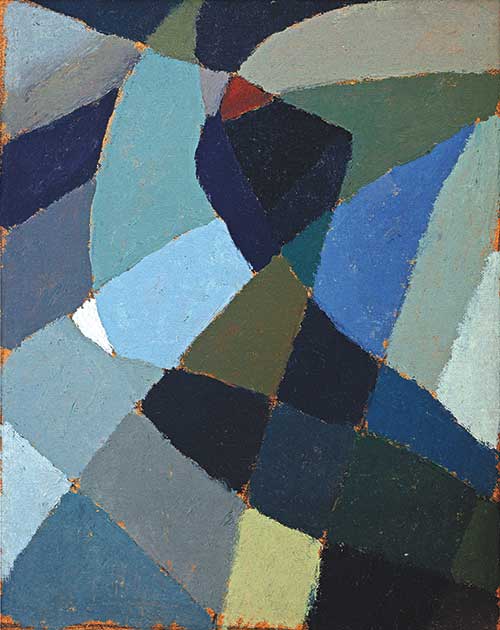The Modernist mind
Latin American abstract artist esteban lisa merges intellect with creativity

Through Dec. 10, the McMullen Museum of Art at Boston College displays “The Abstract Cabinet,” a dynamic exhibition of works by Spanish-Argentine modernist painter Esteban Lisa. A forerunner of Latin American abstraction in the early 20th century, Lisa reveals an intimate knowledge of color, shape and movement in his paintings.

Author: Fundacion Esteban LisaEsteban Lisa (1895–1983), Acto espacial (Spatial Act), January 1, 1955, pastel on paper, 30 x 23 cm, private collection.
The small scale of Lisa’s paintings draws viewers in for a more concentrated analysis. Lisa was a private, intellectual artist during his lifetime and many of his works display a kind of calculating creativity, as he uses his paints to work through his thoughts.
“Lisa’s works, painted on cardboard and scraps of paper, reveal in small scale his theories on the cosmos and the dialectic among aesthetics, philosophy, and science,” notes Curator Elizabeth Thompson Goizueta in a press release. “His abstractions explore visually infinite interpretations of form and color based on his intellectual theories.”
The pieces in “The Abstract Cabinet” range from Lisa’s early forays into abstraction in the 1930s to later paintings focused on pictorial movement in the 1960s. Viewers can see the marked change in his interests and attitude over the years. The early paintings feature a muted, earthy color palette and more explicitly defined shapes, perhaps influenced by viewings of Spanish cubism. Later works are bright and frenetic, more akin to Kandinsky than Picasso.
His 1935 piece “Composición (Composition)” features three curved rectangles in shades of burnt red and green positioned next to each other. They sit on an olive green backdrop. Here Lisa dips his toes into abstraction. He uses nonrepresentational shapes, some of which are cut off by the edges of the canvas. He plays with medium, using oil on cardboard, and experiments with color in his subtle gradations.
By 1968, Lisa has plunged headlong into the pool of abstraction with “Juego con líneas y colores (Playing with Lines and Colors).” Sketchily painted on paper, these vibrant strokes in a bright and extensive color spectrum read as contemporary even in 2017. The shift in styles also alludes to an intellectual illumination, a freedom of thought and ideas.
“The Abstract Cabinet” is the first exhibition of Lisa’s work in New England. The exhibit is titled and modeled after Soviet artist El Lissitzky’s 1920s installation of his constructivist work in small rooms, which he called his “Abstrakte Kabinett.” For northeastern U.S. audiences, it may be the first introduction to one of Latin America’s most important modern painters.
Goizueta says, “Lisa advanced a utopian vision of mid-century Latin American abstraction. Lisa’s private archive of paintings has now posthumously been displayed around the world to great acclaim, and his role is being fully recognized.”







